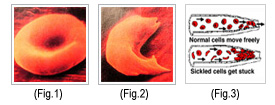
Your questions answered
Navigating the complexities of sickle cell disease can be challenging, but you’re not alone. Our faqs are here to provide you with clear, concise information, helping you understand more about the disease, our foundation’s efforts, and how you can get involved. Whether you’re seeking details about sickle cell management, curious about our programs, or wondering how you can contribute, our FAQ section is designed to assist you.
Find answers quickly:
We’ve compiled a comprehensive list of frequently asked questions to help you get the information you need. Each question is answered with accuracy and care, reflecting the latest research and our foundation’s practices. If you have a question that isn’t covered here, please don’t hesitate to reach out to us directly. We are committed to providing support and spreading awareness to enhance the lives of those affected by sickle cell disease.
How is sickle cell disease treated?
Transfusions of red blood cells are given every three to four weeks. This is the main treatment for fighting the strokes that can occur in children with sickle cell disease. Complications can include iron overload, infection, antibody formation, and unwanted transfusion reactions that can mimic symptoms, such as anemia.
Hydroxyurea is a drug used to help reduce sickling and many of the major complications of sickle cell disease. It is a once-daily medication taken by mouth.
The treatment goal is to boost normal hemoglobin levels by increasing the patient’s level of fetal hemoglobin (hbf), which normally decreases very quickly after birth
Stem cell transplant is the only cure for sickle cell disease. The cure was first performed successfully in 1983 when a St. Jude patient with leukemia and sickle cell disease received a bone marrow transplant. The procedure cured both diseases.
During a transplant, the patient’s bone marrow is replaced with marrow from a person who does not have sickle cell disease. The transplanted cells grow into healthy blood cells. Even though bone marrow transplant is a cure for sickle cell disease, its use is limited because of the problems in finding a matched donor and the complications associated with the transplant.
Some types of stem cell transplants may be called “bone marrow transplants” because the cells come from the donor’s bone marrow.
Other treatments include antibiotics, pain medicines, and psychological counseling. These are used mainly to treat side effects of sickle cell anemia.
What’s the associated costs?
The average cost of an allogeneic bone marrow transplant in the United States is around $800,000, while an autologous transplant will cost you around $350,000. This can vary hugely from state to state, though, and areas where bone marrow transplants are in high demand will see higher prices.
What is sickle cell disease?
Sickle cell disease is the most common genetic disease in the U.S.; an estimated 70,000-80,000 Americans have it. It is a group of inherited red blood cell disorders.
 Normal red blood cells are round like doughnuts, and they move through small blood tubes in the body to deliver oxygen. (fig.1)
Normal red blood cells are round like doughnuts, and they move through small blood tubes in the body to deliver oxygen. (fig.1)
Sickle red blood cells become hard, sticky, and shaped like sickles used to cut wheat. (fig.2)
When these hard and pointed red cells go through the small blood tube, they clog the flow and break apart. This can cause pain, damage, a low blood count, or anemia. (fig.3)
Are there different types of sickle cell disease?
The three most common forms of the disease in the United States are:
- Hemoglobin SS or sickle cell anemia
- Hemoglobin SC disease
- Hemoglobin sickle beta-thalassemia (a form of “Cooley’s” anemia)
Each of these can cause very painful “crisis” episodes and, in severe cases, lead to stroke, heart attack, and death.
How can I be tested?
A simple, painless blood test called the hemoglobin electrophoresis can be done by your doctor or local sickle cell foundation.
When should I be tested?
Get tested now for sickle cell! If you and your partner are of child-bearing age, you should be tested immediately so that you can make informed family planning decisions.
How can I help?
Donating blood to your local oneblood and other local blood banks. Sickle cell patients often need multiple blood transfusions to alleviate the painful crisis episodes.
Be an advocate if your loved one experiences a crisis and enters the hospital. Healthcare staff may or may not be familiar with sickle cell disease.
